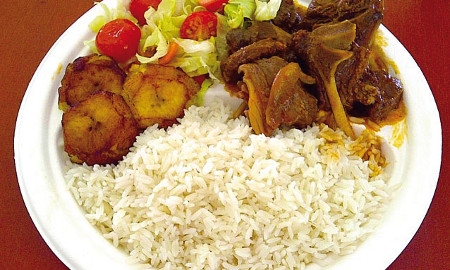The fertility of the mountains and valleys favour the cultivation of vegetables, root vegetables, and fruits that are as native to the region as the aborigine people. The Spanish and African influences in the region have turned out a varied and rich gastronomic culture.
La Bandera, a plate comprised of chicken or beef, rice, and stewed beans all served separately, is a very typical plate usually enjoyed at lunch and comes accompanied by a salad and ripe, or unripe, bananas. Other typical dishes include sancocho, a stew of root vegetables and meat; moro de gandules con coco, rice with pigeon peas and coconut; locrio, rice cooked with chicken or beef, stewed goat meat; mangú, mashed plantains; and asopao, a thick rice soup containing meat.
Of these last few, sancocho is a quintessential plate known throughout Latin America and served on special occasions. It somewhat resembles the Spanish cocido, a stew comprised mainly of meat and garbanzo beans. Traditionally it is made with beef, yucca, yams, bananas, yautia, cilantro and potatoes, among other vegetables, giving it a distinct aroma and an exquisite flavour.
Also worth noting are the delicious desserts, such as the local favourite habichuelas con dulce (sweet coconut creamed beans prepared during Easter week) and other traditional Dominican sweets made with oranges, pineapples, coconut and corn.

0 COMMENTS